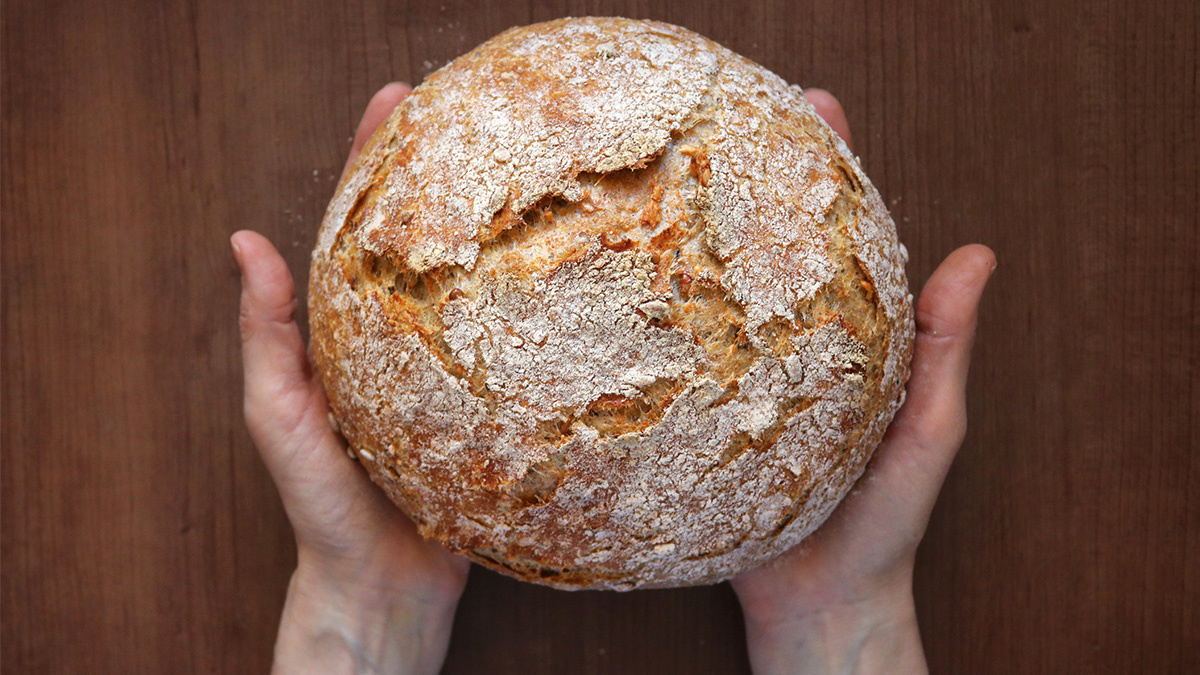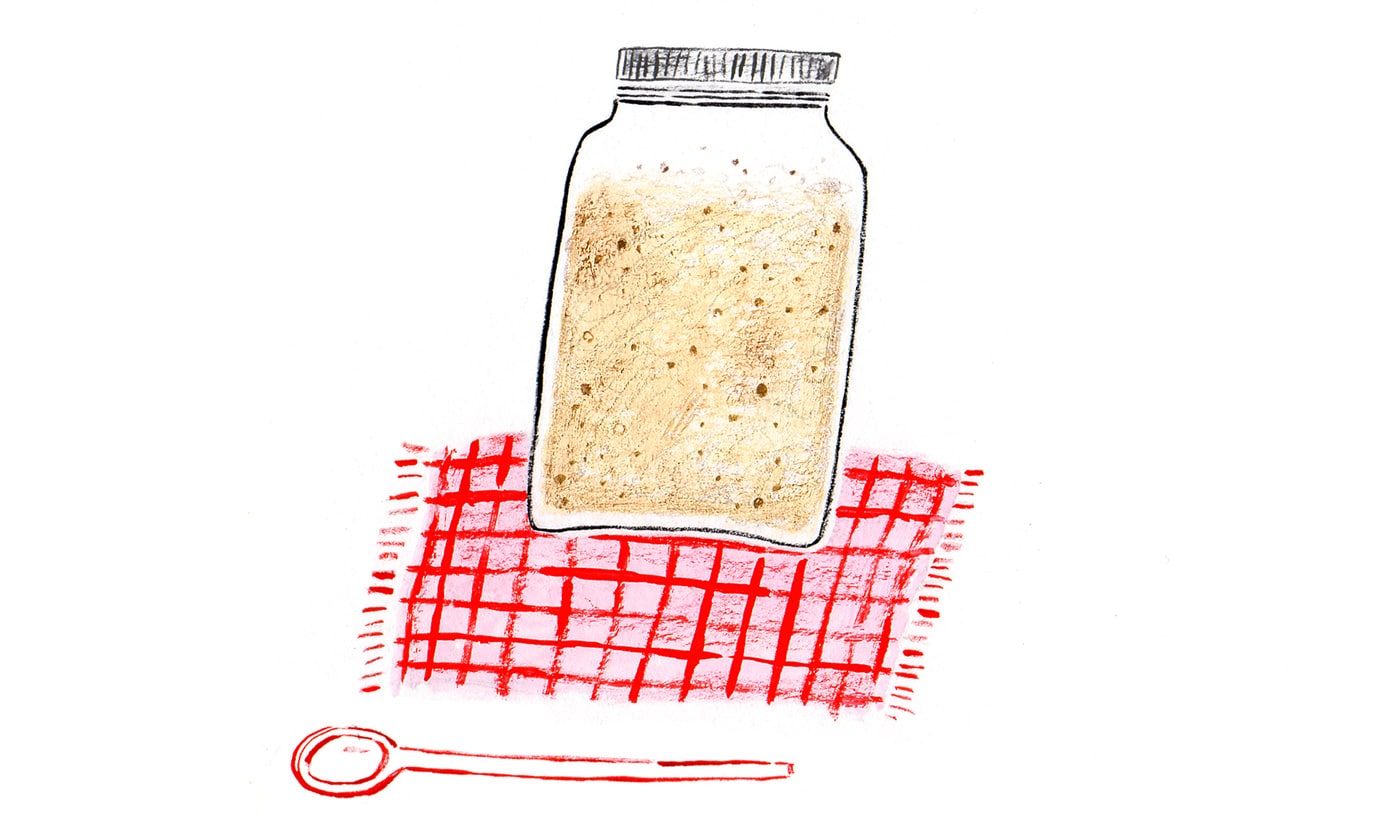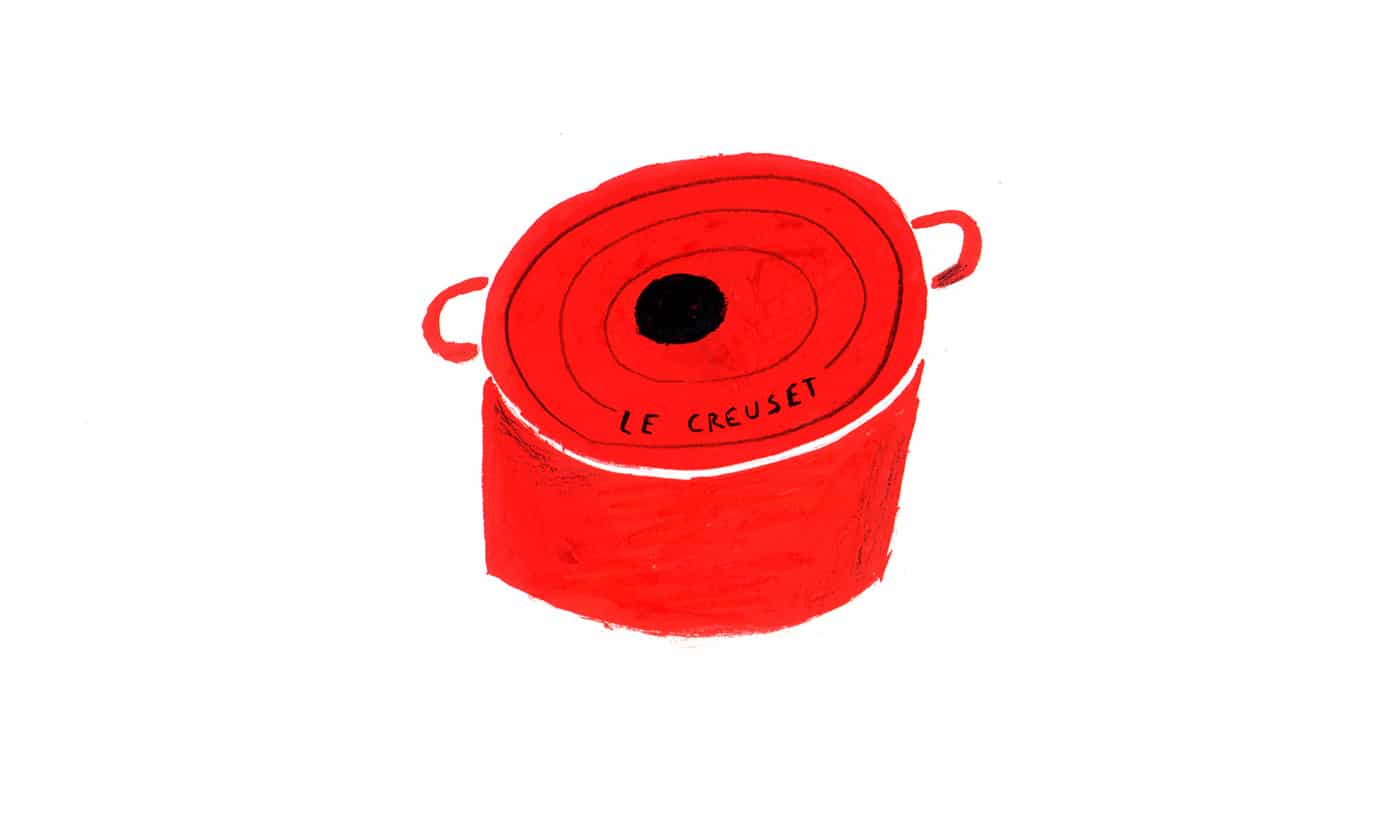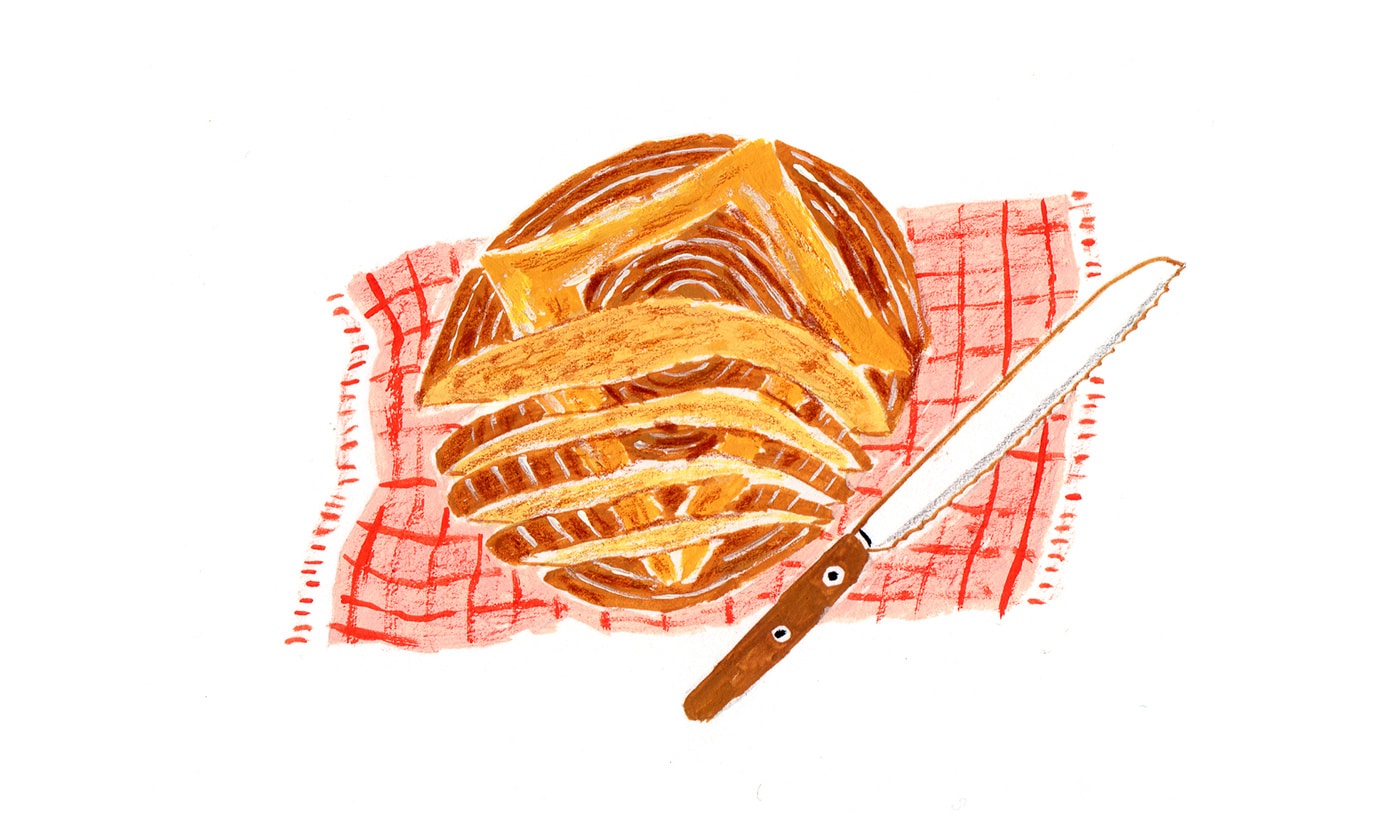
This Home-Baked Bread Can Help You Rise Above Industrial Food

A loaf of homemade 100% whole wheat rustic bread, baked in a Dutch oven. Katrin Ray Shumakov / Moment / Getty Images
By Alexandra van Alebeek
As more home bakers rediscover how to capture wild yeast and turn it into nourishing loaves of bread, they are part of a growing kitchen movement standing up to the industrial food system.
Step 1: Capture Wild Yeast and Make Your Own Sourdough Starter
Sourdough bread begins with the starter, made by capturing wild yeast from the environment and using it to ferment flour and water. Because yeast cultures vary depending on where you are, every sourdough starter tastes a little different. Here’s how to make your own sourdough starter using an ancient grain.

You’ll need:
- A quart mason jar with lid
- All-purpose einkorn flour
- Water
- A scale

Day 1: Mix 60g of flour with 60g of water, and let it sit for 24 hours at room temperature. (Do not sterilize your jar. Your starter uses naturally occurring and varied yeasts and lactobacilli bacteria from your environment.)
Day 2-5: Repeat the flour-water feeding. You should notice bubbles around day 2 or 3 (exciting — your starter is alive!). Once this happens, store your starter in the refrigerator to slow fermentation.
Day 6: At this point you should have an active starter. Give it a name! Throw out half of your starter and give it a hearty meal of 100g flour and 100g water.
To keep your starter alive, you’ll need to feed it equal parts water and flour every third day or so. I usually recommend 60g of water and 60g flour. If you’re not planning to bake bread at the feeding time, throw out half the starter before feeding to keep your starter at a manageable size. It can take two to three bread-baking cycles before your starter is strong and yields predictable results. Professional bakeries have had their starters for generations.
Step 2: Make Bread With an Ancient Grain
Flour:
I chose einkorn wheat for this recipe. Einkorn was domesticated around 9000 B.C. Little about the grain has changed because it nearly became extinct and was never hybridized for industrial markets. Einkorn is noted for higher protein and nutrient content as well as gluten that is more digestible than that in industrial wheat. Emmer and spelt are also ancient grains that work for bread baking. You can experiment with different types and ratios of flour as long as the total added flour equals 500g. For example, if you’re looking for a denser bread try a higher ratio of whole wheat flour.
Tools:
You might want to consider adding a couple of tools to your toolbox. Only the scale is absolutely necessary, but all will make bread-baking considerably easier.
- A scale
- A cast-iron Dutch oven with lid
- A banneton (or an 8-inch bowl with a heavily floured tea towel inside)
- A lamé (or a razor or sharp serrated knife)

Time:
2.5 hours plus a 12-hour cold bulk fermentation.
Ingredients:
- 100g mature sourdough starter
- 350g room temp. water
- 400g all-purpose einkorn flour
- 100g whole wheat einkorn flour
- 11g salt mixed with 20g water
Instructions:
1. Add the starter, water, and flour in a bowl. Mix well so that no dry flour remains. The mixture will be quite sticky — do not worry. Let sit for 10–20 minutes.
2. Add the salt and water mixture to the bread dough. Incorporate, mixing only as much as necessary. Let sit 10–20 minutes.
3. Folding: In the bowl, grab the bottom of the north side of the dough. Stretch until just before it rips and then fold the dough towards you three-quarters of the way. Take the south side of the dough, stretch, and fold all the way over. Repeat this process with the east and west sides. Let the bread rest for 20 minutes. Then repeat this folding and resting step three more times.
4. Shaping: Lightly flour your work surface. Take the dough out of the bowl, and shape it so that it’s rectangular, arranging it so that the short side faces you. Take the south side of the dough, stretch it, and fold it up three-quarters of the way. Take the east side of the bread, stretch it, and fold it up and to the left. Repeat this with the west side. Then take the north flap and fold it all the way over the bread. Roll the dough so that the folding seams are underneath, touching your counter.
Use your hands to push the dough away from your body and then tuck it back toward you, creating surface tension along the outside of the dough. Rotate the dough with each push and tuck and continue this motion until the boule is a uniform shape with strong surface tension. This is not kneading, but shaping. Most sourdough, including this one, is actually a no-knead bread. We want the natural yeast to do as much of the work as possible.
5. Place your bread seam-side up in a lightly floured banneton. Cover with a tea towel and place it in the refrigerator for 12 hours.
6. Next day, preheat your oven (with the Dutch oven in it) to 500 degrees. Take out the Dutch oven, and gently roll your bread into it directly from the refrigerator. Sprinkle some flour on the top and score the dough by slashing the top. Put the lid on the Dutch oven and bake the loaf for 25 minutes. Then take the lid off, and bake for another 15–20 minutes.

7. Remove the bread from the Dutch oven, and allow it to cool for about 10 minutes before slicing, sharing, and enjoying!
Reposted with permission from YES! Magazine.

 233k
233k  41k
41k  Subscribe
Subscribe 